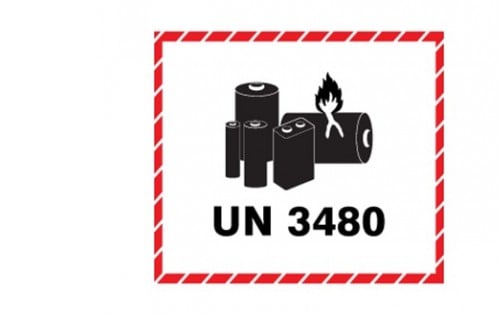Latest Updates on Lithium-Ion Battery Shipping: New Regulations for UN 3480 & UN 3481
The transportation of lithium-ion batteries, classified under UN 3480 (batteries shipped alone) and UN 3481 (batteries contained in or packed with equipment), is governed by stringent international regulations to ensure safety. Recent developments have introduced significant changes to these regulations: State of Charge Recommendations and Requirements
3/16/20251 min read


The transportation of lithium-ion batteries, classified under UN 3480 (batteries shipped alone) and UN 3481 (batteries contained in or packed with equipment), is governed by stringent international regulations to ensure safety. Recent developments have introduced significant changes to these regulations:tgl-group.net+5heatedbattery.com+5thecompliancecenter.com+5
State of Charge Recommendations and Requirements
The International Air Transport Association (IATA) has updated its guidelines regarding the state of charge (SoC) for lithium-ion batteries transported by air:lion.com
Effective January 1, 2025: IATA recommends that shippers limit the SoC to no more than 30% for:heatedbattery.com+2lion.com+2tecex.com+2
UN 3481: Lithium-ion batteries packed with equipment.phmsa.dot.gov+8heatedbattery.com+8lion.com+8
UN 3481: Lithium-ion batteries contained in equipment.phmsa.dot.gov+7lion.com+7heatedbattery.com+7
UN 3556: Vehicles powered by lithium-ion batteries.lion.com
Mandatory Compliance from January 1, 2026: The 30% SoC limit will become mandatory for:lion.com+1tecex.com+1
UN 3481: Lithium-ion batteries packed with equipment with cells/batteries exceeding 2.7 Wh.lion.com
UN 3556: Lithium-ion battery-powered vehicles with batteries exceeding 100 Wh.phmsa.dot.gov+3lion.com+3tgl-group.net+3
It's important to note that lithium-ion batteries shipped alone (UN 3480) are already subject to the 30% SoC limit. tecex.com+4lion.com+4heatedbattery.com+4
Documentation Requirements
For shipments involving higher watt-hour batteries, a Shipper’s Declaration is required, stating "Dangerous Goods as per Attached DGD." gwp.co.uk+4shipmercury.com+4tecex.com+4
Packaging and Labeling Guidelines
Proper packaging and labeling are crucial for the safe transport of lithium-ion batteries:tecex.com
Inner Packaging: Batteries should be enclosed in materials that prevent short circuits, such as fiberboard boxes.tecex.com
Outer Packaging: Use robust, rigid containers made of wood, fiberboard, or metal to protect against impacts.tecex.com
Labeling: Each package must display a Lithium Battery Mark/UN label, printed in color, indicating the appropriate UN number(s) (e.g., UN 3480, UN 3481).tecex.com
Overpack Label: For palletized shipments, an 'Overpack Label' is required when one or more boxes contain lithium batteries.tecex.com
Conclusion
Staying informed about these regulatory updates is essential for compliance and safety in the transportation of lithium-ion batteries. Shippers should review and adapt their procedures to align with the latest guidelines.thecompliancecenter.com+9
